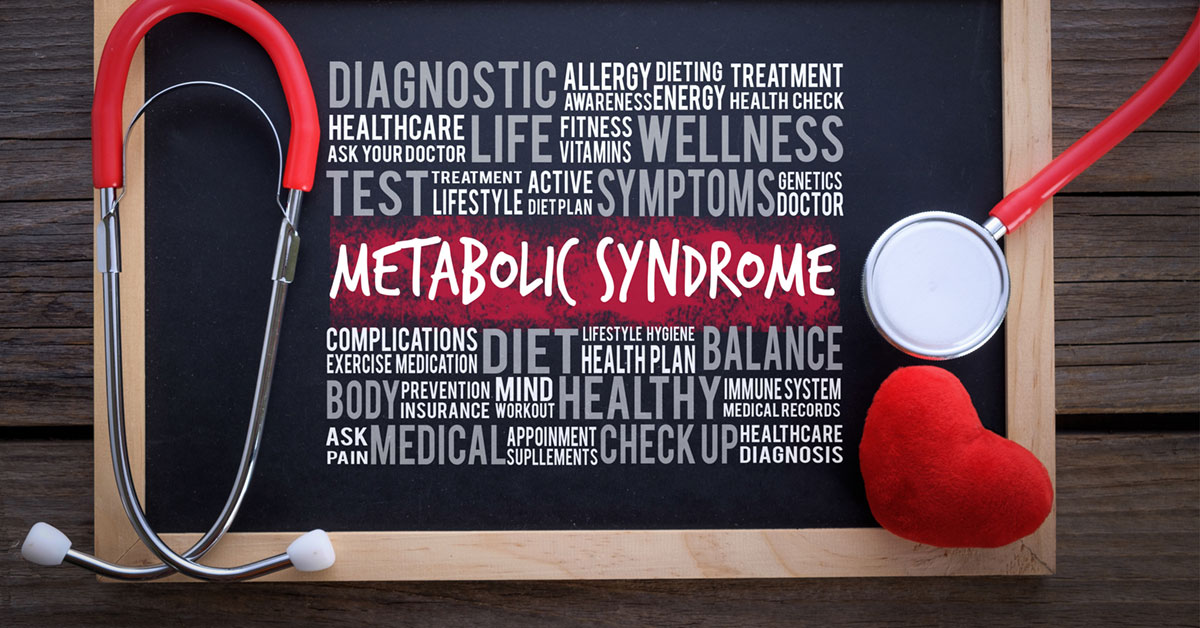What is Metabolic Syndrome?

Metabolic syndrome is a condition that occurs when a person has three or more of five risk factors that increase the likelihood of cardiovascular disease, diabetes, and stroke. Each of the five risk factors increases risk for cardiovascular disease individually. When combined, the risk is more severe. Learn more about each of these five risk factors and steps you can take to reduce your risk.
High blood glucose
High blood glucose is another term for high blood sugar, or hyperglycemia. It happens when the body either does not produce enough insulin or cannot use the insulin effectively. For the purposes of diagnosing metabolic syndrome, high blood sugar includes levels that would be considered prediabetic as well as diabetic.
For patients with high blood glucose, it is important to address glucose levels to mitigate risk for heart disease. For some, this can be done through exercise. If exercise alone is not enough to lower blood sugar, doctors may prescribe insulin to help regulate blood sugar.
Low levels of HDL
High-density lipoproteins, or HDL, are known as “good” cholesterol, while low-density lipoproteins, or LDL, are “bad.” Cholesterol becomes a problem when LDL levels are too high and HDL is too low. HDL cholesterol is important because it helps remove LDL from the bloodstream. Low levels of HDL rarely carry symptoms. Still, low HDL can be dangerous, as it puts you at risk for heart failure and insulin resistance.
For patients with low HDL, doctors typically recommend lifestyle changes, such as eating a heart healthy diet, increasing exercise, losing weight, quitting smoking, and cutting down on alcohol.
High triglycerides
Triglycerides are a type of lipid, or fat, found in the blood. The purpose of triglycerides is to store unused calories until the body needs them for energy. But if more calories are stored than are burned, triglycerides can build up over time. This can contribute to the thickening of artery walls and raise the risk of stroke, heart attack, and other heart disease.
Lowering triglycerides is important for those with high triglycerides and metabolic syndrome. Often, healthy lifestyle choices — exercise, weight loss, and a heart-healthy diet — are the best way to lower triglycerides. A healthy diet that can help lower triglycerides includes reducing sugar, alcohol, and refined carbohydrates and choosing healthier, unsaturated fats. If lifestyle alone does not lower triglycerides, doctors may prescribe medications or supplements like statin, fibrates, fish oil, or niacin.
High blood pressure
High blood pressure, or hypertension, is closely associated with obesity and insulin resistance. Patients can have hypertension for years without any symptoms, and many times the condition is diagnosed through regular physical exams. A variety of medications can be prescribed for patients with high blood pressure to help bring it into normal range.
Large waist circumference
While obesity contributes to risk for heart disease, research has found that extra weight stored around the abdomen raises risk in particular. For women, this is defined as a waist larger than 35 inches, and for men it is larger than 40 inches.
Managing the risk factors involved in metabolic syndrome is key for all patients. Most of the risk factors can be managed through increased exercise, balanced eating, and losing weight. For the risk factors that are unable to be managed with lifestyle changes, your physician can prescribe medications or other treatments to help reduce overall risk.
